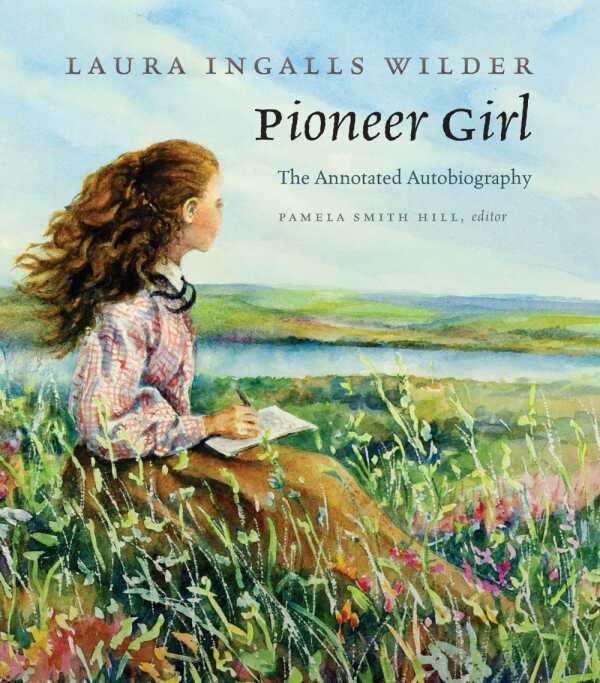Pioneer Girl
The Annotated Autobiography
Wilder’s memoir is a fascinating piece of American history, but it’s the annotations that set Pioneer Girl apart as the most important work of its kind.
Generations have grown up with Laura Ingalls Wilder through the Little House on the Prairie books and television show, reminders of the courageous families that braved the wild frontier. More than eighty years after it was first written, the memoir that started it all, handwritten in pencil on lined tablets, will finally be published. Pioneer Girl: The Annotated Autobiography, edited by Pamela Smith Hill, is clearly the definitive work on Wilder. It thrills with new insights and mature content, educates with historical facts and documentation, and enlightens with cultural perspective and commentary, all while maintaining the spirit of adventure and integrity that is the backbone of the Little House world and Wilder herself.
Pioneer Girl, a first-person, nonfiction account completed by Wilder in 1930 when she was in her sixties, chronicles the Ingalls family’s journey as they made their way back and forth across the land, beginning in Kansas, 1869, when Wilder was just two years old, through 1888 in Dakota Territory, when Wilder was a young married woman of twenty-one. The manuscript appears in its entirety, complete with misspellings, musings, and notes from Wilder for her daughter, Rose Wilder Lane, who acted as her mother’s editor and literary advisor.
In and of itself, Pioneer Girl is a fascinating slice of Americana, but it is Hill’s annotations, based on years of research and the efforts of the Pioneer Girl Project contributors, that set Pioneer Girl apart as the most important and relevant work of its kind.
The annotations range from informative to speculative, but each shows respect for the subject as well as impressive knowledge of the entire Little House series and other versions of the memoir, which Wilder and Lane had hoped to publish for an adult audience. The details are astonishing. For example, when Wilder mentions casually that, “the wild roses bloomed,” Hill identifies the “prairie rose” or “rosa arkansana.” A detailed description follows, and Little House on the Prairie is referenced, where a passage in Wilder’s distinct voice notes, “The roses scented the wind, and along the road fresh blossoms, with their new petals and golden centers, looked up like little faces.” In this way, many notes link the information in Pioneer Girl to its counterpart, whether juvenile fiction or serials credited to Wilder, or in some cases “borrowed” by Lane for fictionalization.
Great attention is paid to accuracy, and Hill notes when and where Wilder’s recollections stray from historical records, as well as intentional changes made to improve the narrative. Every detail, from the weather and geography to likely romantic trysts and scandals, songs sung, books read, and food eaten, was verified for authenticity. Photographs, maps, and other original treasures like these are sprinkled throughout. Four appendices offer additional insights and are followed by an extensive bibliography and index.
With Pioneer Girl: The Annotated Autobiography, Hill has ensured that not only will Laura Ingalls Wilder continue to inspire, but that her audience will grow and expand for generations to come.
Reviewed by
Pallas Gates McCorquodale
Disclosure: This article is not an endorsement, but a review. The publisher of this book provided free copies of the book to have their book reviewed by a professional reviewer. No fee was paid by the publisher for this review. Foreword Reviews only recommends books that we love. Foreword Magazine, Inc. is disclosing this in accordance with the Federal Trade Commission’s 16 CFR, Part 255.


